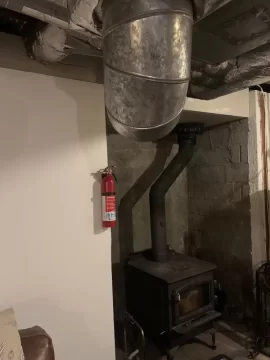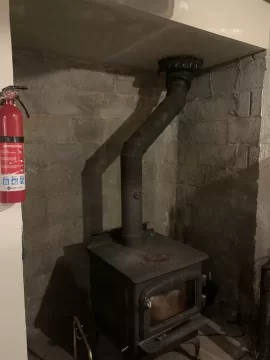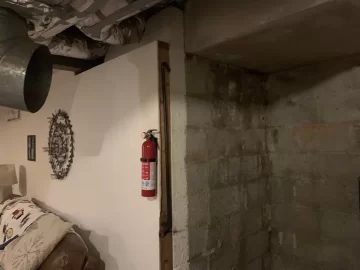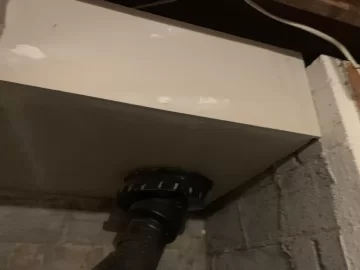I’ve been in my home for about 1 year and looking to finish the basement and was looking for advice on what to do around existing wood stove. Right now, the stove sits recessed below the chimney of the main floor insert fireplace (two story colonial). The stove pipe goes up a separate flue within the brick chimney. It appears previous owners used this stove for heating through forced air duct which is valved to air handler part of heat pump system. I’m looking to remove duct elbow near the stove and just have a flush intake on the ceiling. Besides that I want to insulate and finish the cinder block. The ceiling above the stove is drywall and was thinking of replacing with cement board. I ran this stove briefly last year and it works but is tough to get going due to cold air in the pipe. Didn’t have seasoned wood to do much more than that. Beyond finishing advice, looking for operating advice from others with basement stoves and moving heat with air handler through house ducts.









